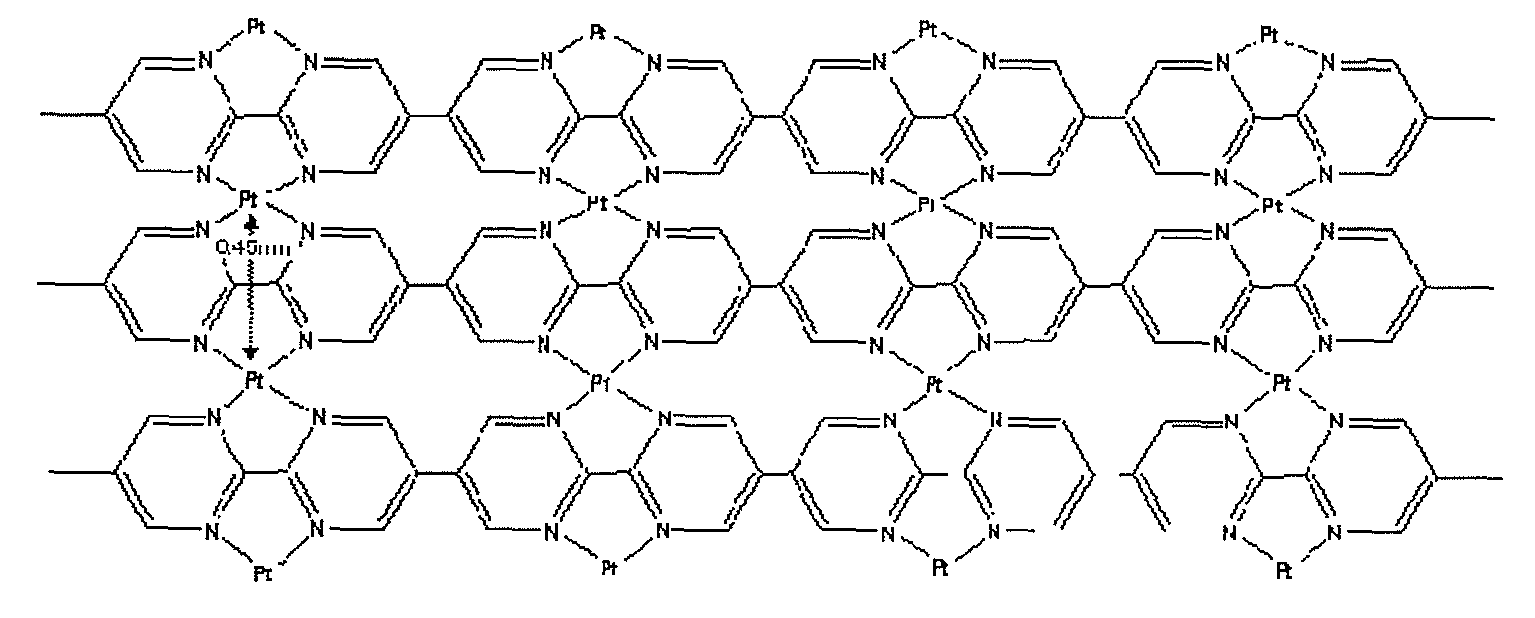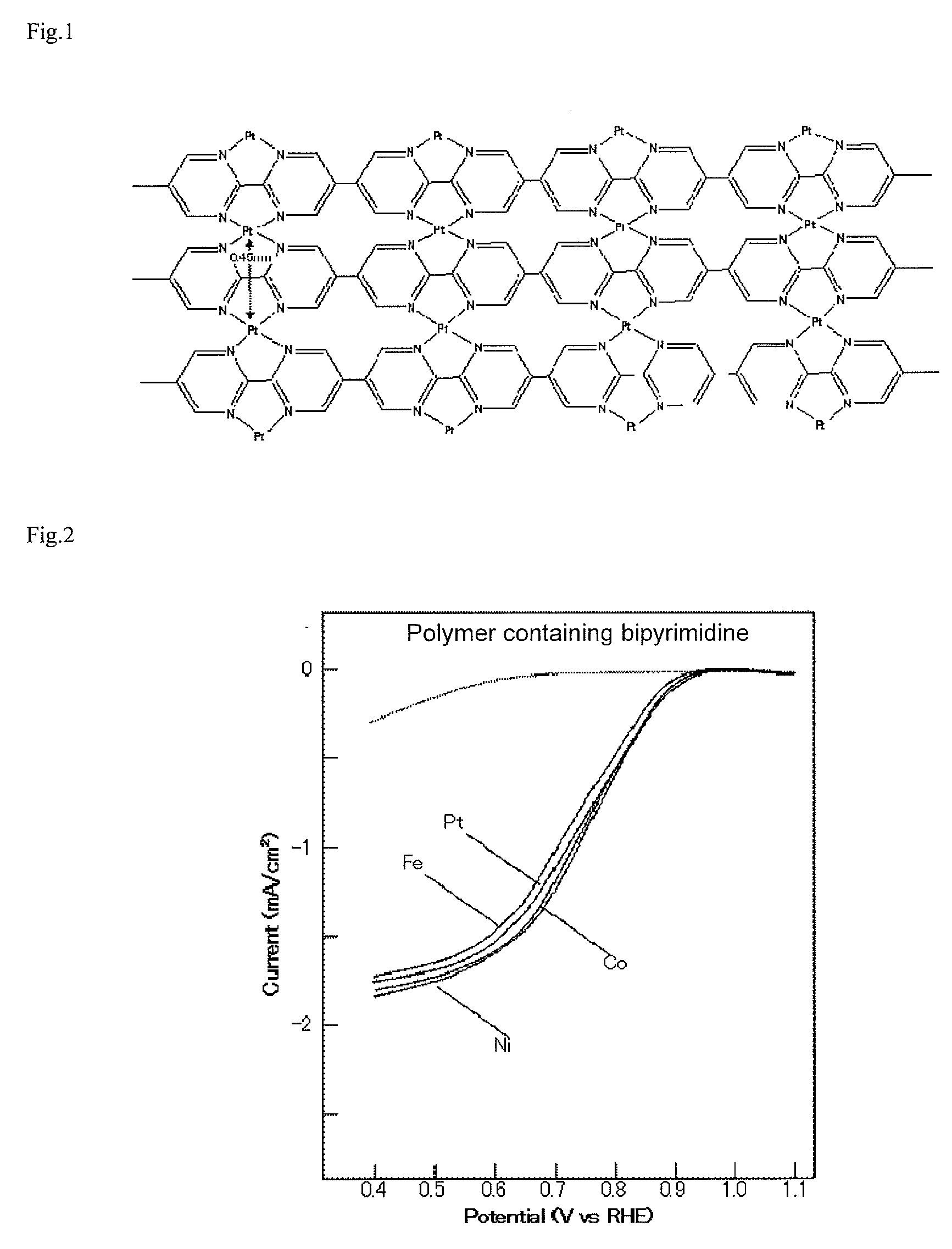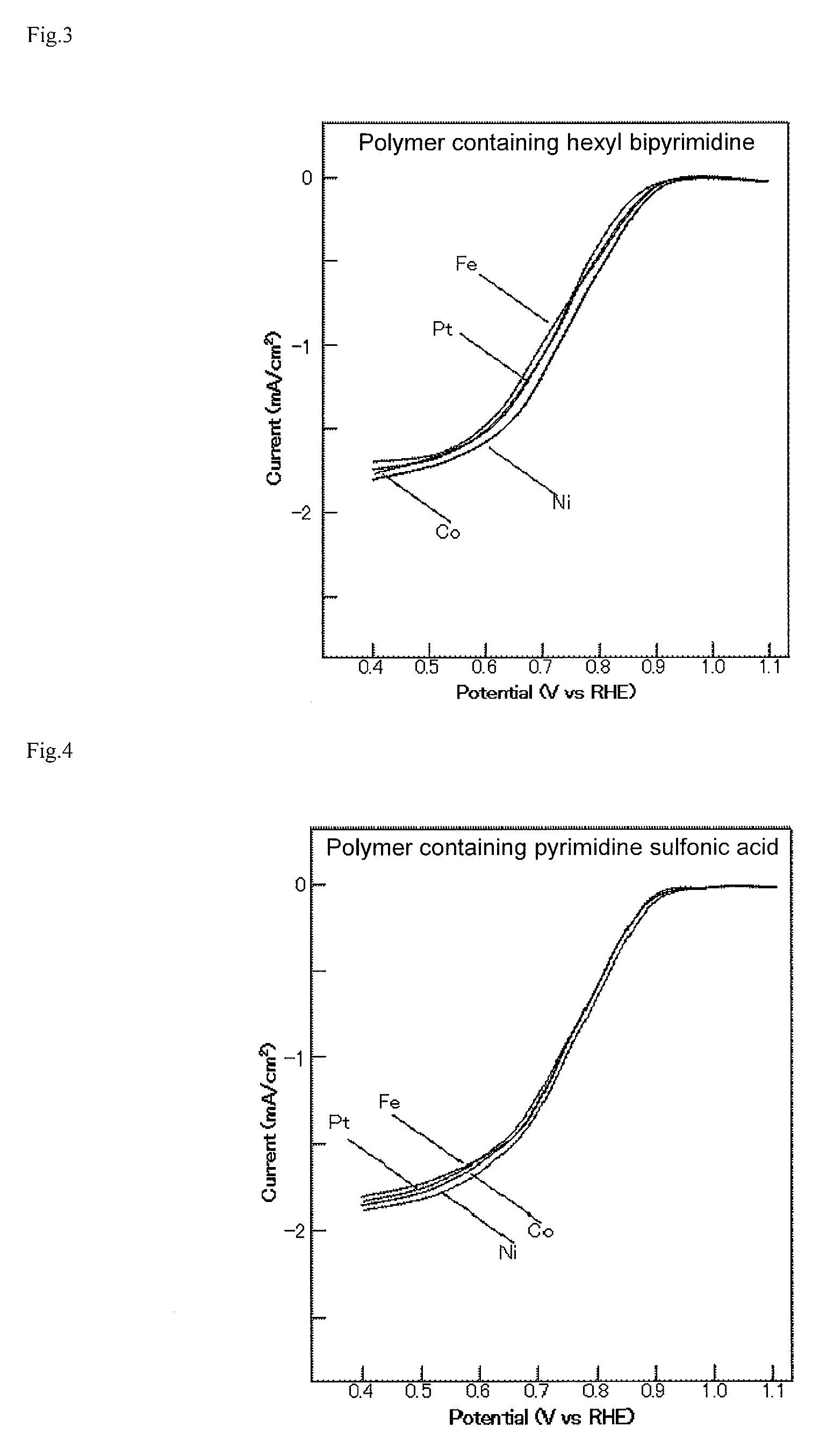Catalyst for oxygen reduction electrode and oxygen reduction electrode
a catalyst and oxygen reduction technology, applied in the field of catalysts, can solve the problems of reducing the energy conversion efficiency of fuel cells and air cells, reducing the activity of oxygen reduction pt, and pt is rare and expensive, so as to improve the stability of oxygen reduction state, improve the active metal density per catalyst, and allow metal coordination. to increase
- Summary
- Abstract
- Description
- Claims
- Application Information
AI Technical Summary
Benefits of technology
Problems solved by technology
Method used
Image
Examples
example 1
Synthesis of the Organometallic Polymer Structure
[0041]By the following method, a metal coordinated polymer structure was produced, in which Co, Ni, Fe, and Pt each were coordinated with a polymer including a ligand comprising a heterocyclic 6-membered ring including two nitrogen atoms (N) as a main chain.
[0042]Synthesis of the polymer including a ligand comprising a heterocyclic 6-membered ring including two nitrogen atoms (N) as a main chain was performed by the following procedure. First, using dimethylformaldehyde as a solvent, 2,2′-dibromo-5,5′-bipyrimidine, bis(1,5-cyclooctadiene)nickel, 1,5-cyclooctadiene, and bipyridine are dissolved. Subsequently, dimethylfuran is added to the produced solution. When the solution is stirred at 60° C. for 2 hours, a yellow solid object is deposited. The deposited solid object is washed in order of toluene, ethylenediaminetetraacetic acid of pH=3, ethylenediaminetetraacetic acid of pH=9, sodium hydroxide of pH=9, distilled water, and benzene....
example 2
A Structure of the Organometallic Polymer Structure
[0044]Structural analysis was performed on the obtained organometallic polymer structure by ultraviolet-visible-NIR spectroscopy (UV-Vis-NIR), X-ray absorption spectroscopy (EXAFS), X-ray photoelectron spectroscopy (XPS), and infrared absorption spectroscopy (IR). As a result of the analysis, each metal of Co, Ni, Fe, and Pt existed between the grown polymers containing bipyrimidine, and coordinate bonded to an N section. FIG. 1 shows a model diagram of a metal coordinated polymer structure in which Pt is coordinated with the polymer containing bipyrimidine. In FIG. 1, Pt exists between pyrimidines, one Pt atom is coordinate bonded to four Ns in four molecules of pyrimidine. This coordination bond is stabilized. At this time, a distance between adjacent Pt atoms is 0.45 nm. Moreover, a distance between adjacent metals in the organometallic polymer structure in which each of Co, Ni, and Fe was coordinated with bipyrimidine was as fol...
example 3
Electrochemical Characteristics of the Metal Coordinated Polymer Structure
[0045]The oxygen reduction capacity of the produced organometallic polymer structure was evaluated by the following method. In production of an electrode, distilled water was added to the organometallic polymer structure made into powders using a mortar, and a dispersion was produced by ultrasonic irradiation. The dispersion was dropped so that the organometallic polymer structure of 10 μg might be carried on a glassy carbon (GC) electrode having a diameter of 3 mm and polished well, and dried. Thereby, a GC-organometallic polymer structure electrode was produced. FIG. 2 shows the results of rotating disk electrode (RDE) measurement in an oxygen reduction reaction (ORR) of the GC-organometallic polymer structure electrode in which Co, Ni, Fe, and Pt each are coordinated with a polymer containing GC and bipyrimidine. A solution for measurement is an aqueous solution of 0.5 M H2SO4 saturated with oxygen. A sweep...
PUM
| Property | Measurement | Unit |
|---|---|---|
| Electrical conductivity | aaaaa | aaaaa |
| Stability | aaaaa | aaaaa |
| Reduction potential | aaaaa | aaaaa |
Abstract
Description
Claims
Application Information
 Login to View More
Login to View More - R&D
- Intellectual Property
- Life Sciences
- Materials
- Tech Scout
- Unparalleled Data Quality
- Higher Quality Content
- 60% Fewer Hallucinations
Browse by: Latest US Patents, China's latest patents, Technical Efficacy Thesaurus, Application Domain, Technology Topic, Popular Technical Reports.
© 2025 PatSnap. All rights reserved.Legal|Privacy policy|Modern Slavery Act Transparency Statement|Sitemap|About US| Contact US: help@patsnap.com



